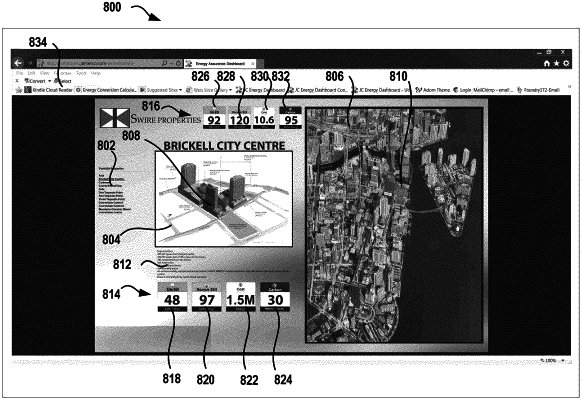| CPC G06F 30/13 (2020.01) [G01M 99/00 (2013.01); G06Q 10/067 (2013.01); G06Q 10/06315 (2013.01); G06F 2111/08 (2020.01)] | 20 Claims |

|
1. An apparatus for optimizing building performance, the apparatus comprising:
a first computing device hosting a virtual data acquisition component for calibrating a virtual building performance model having a plurality of predicted building performance metrics that were produced through a physics-based simulation of expected building performance;
a second computing device hosting a physical data acquisition component having a plurality of sensors for acquiring physical whole building performance data from a building;
a third computing device hosting an integrated interface, having an input device, and connecting to the first computing device and the second computing device over a network; and
a display device for displaying a dashboard thereon connecting to the third computing device;
wherein the physical data acquisition component acquires physical whole building performance data from the building through the plurality of sensors and transmits the physical whole building performance data, within the second computing device and to the third computing device, over the network;
wherein the virtual data acquisition component receives the physical whole building performance data from the third computing device over the network and uses the physical whole building performance data to modify the virtual building performance model, on a continuous basis, to transform the virtual building performance model into a calibrated model;
wherein the third computing device receives input through the input device for modifying the model and sends the input to first computing device, so that the virtual data acquisition component can modify the virtual building performance model in response to the new inputs;
wherein the virtual data acquisition component transmits the calibrated model with the plurality of predicted building performance metrics to the third computing device over the network; and
wherein integrated interface generates output relating to the calibrated model, and displays the output on the display device, so that the predicted building performance metrics can be compared with the physical whole building performance data in real-time.
|